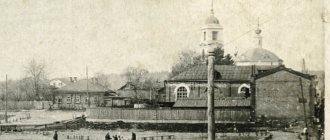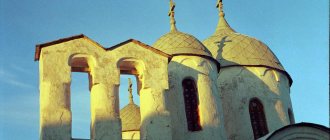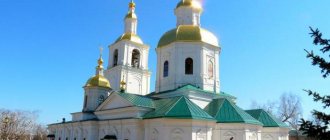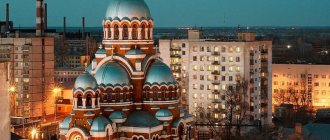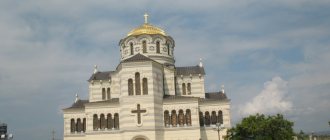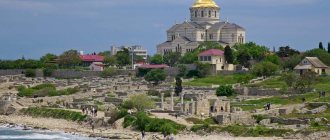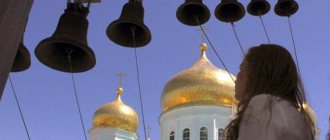Mir
Russia Tver region Tver Ascension Cathedral (Tver) Map is loading...
{"format":"leaflet","minzoom":false,"maxzoom":false,"limit":50,"offset":0,"link":"all","sort":[""], "order":[],"headers":"show","mainlabel":"","intro":"","outro":"","searchlabel":"\u2026 \u0441\u043b\u0435\ u0434\u0443\u044e\u0449\u0438\u0435 \u0440\u0435\u0437\u0443\u043b\u044c\u0442\u0430\u0442\u044b","default":"","import-annotation":false,"width ":"auto","height":"350px","centre":{"text":"","title":"""link":"""lat":56.859502800000001343505573458969593048095703125,"lon": 35.90955559999999735509845777414739131927490234375,"icon":""},"title":"","label":"","icon":"","lines":[],"polygons":[],"circles":[ ],"rectangles":[],"copycoords":false,"static":false,"zoom":8,"defzoom":14,"layers":["OpenStreetMap"],"image layers":[] ,"overlays":[],"resizable":false,"fullscreen":true,"scrollwheelzoom":true,"cluster":false,"clustermaxzoom":9,"clusterzoomonclick":true,"clustermaxradius":80, "clusterspiderfy":true,"geojson":"","clicktarget":"","showtitle":true,"hidenamespace":false,"template":"","userparam":"","activeicon": "","pagelabel":false,"ajaxcoordproperty":"","ajaxquery":"","locations":[{"text":"\u003Cb\u003E\u003Ca href=\"/palomnik/%D0% 92%D0%BE%D0%B7%D0%BD%D0%B5%D1%81%D0%B5%D0%BD%D1%81%D0%BA%D0%B8%D0%B9_%D1%81% D0%BE%D0%B1%D0%BE%D1%80_(%D0%A2%D0%B2%D0%B5%D1%80%D1%8C)\» title=\»\u0412\u043e\u0437\ u043d\u0435\u0441\u0435\u043d\u0441\u043a\u0438\u0439 \u0441\u043e\u0431\u043e\u0440 (\u0422\u0432\u0435\u0440\u044c)\»\u003E \u0412\u043e\u0437\ u043d\u0435\u0441\u0435\u043d\u0441\u043a\u0438\u0439 \u0441\u043e\u0431\u043e\u0440 (\u0422\u0432\u0435\u0440\u044c)\u003C/a \u003E\u003C/b\ u003E\u003Chr /\u003E\u003Ca href=\»/palomnik/%D0%A1%D0%B2%D0%BE%D0%B9%D1%81%D1%82%D0%B2%D0%BE:%D0 %90%D0%BD%D0%BD%D0%BE%D1%82%D0%B0%D1%86%D0%B8%D1%8F\" title=\"\u0421\u0432\u043e\u0439\u0441 \u0442\u0432\u043e:\u0410\u043d\u043d\u043e\u0442\u0430\u0446\u0438\u044f\»\u003E\u0410\u043d\u043d\u043e\u0442\u0430\u0446 \u0438\u044f\u003C/ a\u003E: "'\u0421\u043e\u0431\u043e\u0301\u0440 \u0412\u043e\u0437\u043d\u0435\u0441\u0435\u0301\u043d\u0438\u044f \u0413\u0 43e\u0441\u043f\u043e '' 432\u043d\u044b\u0439\u0445 \u0440\u0430\u043c \u0422\u0432\u0435\u0440\u0441\u043a\u043e\u0439 \u0435\u043f\u0430\u0440\u0445\u0438\u0438 \u0420\u0443 \u0441\u0441\u043a\u043e\u0439 \u043f\u0440\u0430\u0432\u043e\u0441\u043b\u0430\u0432\u043d\u043e\u0439 \u0446\u0435\u0440\u043a\u0432\u0438, \u043d\u0430 \u043f\u0435\u0440\u0435\ u0441\u0435\u0447\u0435\u043d\u0438\u0438 \u0422\u0432\u0435\u0440\u0441\u043a\u043e\u0433\u043e \u043f\u0440\u043e\u0441\u0 43f\u0435\u043a\u0442\u0430\ u0438 \u0421\u043e\u0432\u0435\u0442\u0441\u043a\u043e\u0439 \u0443\u043b\u0438\u0446\u044b (\u0426\u0435\u043d\u0442\u0440\u 0430\u043b\u044c\u043d\u044b \u0439\u0440\u0430\u0439\u043e\u043d). \u0418\u043c\u0435\u0435\u0442 \u0441\u0442\u0430\u0442\u0443\u0441 \u0430\u0440\u0445\u0438\u0435\u0440\u0435\u0439\u0441\ u043a\u043e\u0433\u043e\u043f \u043e\u0434\u0432\u043e\u0440\u044c\u044f.","title":"\u0412\u043e\u0437\u043d\u0435\u0441\u0435\u043d\u0441\u043a\u0438\u0439 \ u0441\u043e \u0431\u043e\u0440 (\u0422\u0432\u0435\u0440\u044c)","link":"","lat":56.859502800000001343505573458969593048095703125,"lon":35.909555 59999999735509845777414739131927490234375,"icon":""}],"imageLayers ":[]}
56.859675; 35.909453
Russia, Tver, Sovetskaya street, 26
Tver, Tver region 170100
Russia
Telephone:
(4822) 32-28-27
Cathedral of the Ascension of the Lord in Tver
- Orthodox church of the Tver diocese of the Russian Orthodox Church, at the intersection of Tverskoy Prospekt and Sovetskaya Street (Central District). It has the status of a bishop's metochion.
History[edit]
The history of the cathedral goes back centuries. It is known that until 1612, near the present church there was a wooden one with the same name. Nearby there was also a wooden church in the name of the Epiphany of the Lord. These were small parish cathedrals (warm and cold). Both were burned during the Polish-Lithuanian intervention. In 1624, the Church of the Ascension was rebuilt, and in 1709, two churches stood here again - the Ascension and the Epiphany. But in 1725, the Epiphany Church burned down and was never rebuilt.
Later, at this place, a crossroads, a wooden church was built in the name of the Ascension of the Lord with the throne of the Epiphany. But this temple did not last long. It burned to the ground during a huge fire. After some time, the parishioners asked for permission to build a new church on this site, already made of stone, with the same name and the same chapel. A deed of temple deed was given. In 1751, the chapel of the Epiphany was completed by the builders “with clean images and all church vestments removed” and consecrated.
Construction of the cathedral itself continued for almost another 9 years, and in 1760 the main chapel was consecrated. But this cathedral did not last long. On May 19, 1763, a devastating fire occurred in Tver. The newly built church also burned down. But the parishioners were able to quickly restore the chapel of the Epiphany, which was consecrated in September. Worship services have resumed there. The cathedral itself took a long time to be restored. Finally, in 1768, the interior decoration was restored. The temple was completely built and consecrated. In 1805, a new bell tower was erected near the cathedral.
Time passed. Extensive stone construction was carried out in the center of Tver. Such wonderful masters as K. Rossi, N. Legrand and I. Lvov worked in the city. The cathedral, located in the center of the city, with its already unfashionable “baroque” decoration, ceased to satisfy the illustrious owners and parishioners. The question arose about its restructuring. In 1818, parishioners and priests asked permission to dismantle the cathedral and build a new, more spacious one in its place, with the chapels of Anthony and Theodosius of Pechersk and the Epiphany. The petition was accompanied by a design for the church, signed by the provincial architect N. Legrand. But there were no funds for this work. They decided to expand the cathedral by constructing a new chapel. In 1831, the chapel of Anthony and Theodosius of Pechersk was completed and consecrated. In 1833, on the Feast of the Ascension of the Lord, the entire temple was consecrated with a new gilded iconostasis and walls covered with paintings. And only in 1836 the chapel of the Epiphany of the Lord was consecrated.
The cathedral became a true decoration of the city. During construction, white stone was widely used, from which the columns, cornices, base, steps of the temple and bell tower were made. The cathedral was painted ocher, the decorative details were whitewashed. Painting was used both inside and outside. With the help of painting in the portico, a unique imitation of volumetric reliefs using the grisaille technique was created. The dome and crosses on the cathedral and bell tower were gilded. The roof and dome were covered with tinned iron. Wrought iron was widely used to make bars on windows and doors. The window frames and doors were tinted to look like stained oak.
Everything about the structure was thought out to the smallest detail. The cathedral looked majestic. Unfortunately, it is impossible to completely trace the chronology of the reconstruction - the archival fund of the temple has not completely survived. These are mainly minor repair alterations.
After the revolution in 1922, utensils and icons were confiscated from the Ascension Cathedral by the commission for the confiscation of church valuables. And in 1935 the temple was closed. Since 1936, the building housed an exposition of the regional museum of local lore. In the fall of 1941, Divine services were temporarily resumed. In 1972, the building was transferred to the exhibition hall of the Regional Industrial Exhibition. At the same time, its significant reconstruction was carried out: interfloor ceilings were made, the heating system was replaced, and a ramp was added on the eastern side.
In 1991, at the request of believers, work began on transferring the cathedral to the Church. On January 7, 1993, on Christmas Day, the first service was held in the church.
Bishop's Compound, Ascension Cathedral, Tver
Religious organization Bishop's Compound Ascension Cathedral in Tver Tver and Kashin Diocese of the Russian Orthodox Church (Moscow Patriarchate)
History and description:
The Church of the Ascension of the Lord is located in the Central administrative district of the regional center at the intersection of Tverskoy Prospekt and st. Soviet.
Built in 1838
There are three thrones: the Ascension of the Lord (main), the Epiphany, Saints Anthony and Theodosius of Pechersk.
The history of the emergence of the Church of the Ascension of the Lord goes back centuries. It is known that until 1612, near the present church there was a wooden one with the same name. Nearby there was also a wooden one in the name of the Epiphany of the Lord - these were small parish churches, warm and cold, both were burned during the Polish-Lithuanian intervention. In 1624, the Church of the Ascension was rebuilt, and in 1709 there were again two churches - the Ascension and the Epiphany. But in 1725, the Church of the Epiphany burned down and was never rebuilt. Later, at this place, a crossroads, a wooden church in the name of the Ascension of the Lord with the throne of the Epiphany was also built. But this church did not stand for long - and on April 27, 1717, it burned to the ground during a strong fire;
After some time, the parishioners asked for permission to build a new church on this site, already made of stone, with the same name and the same chapel. A charter for the temple was given, and in 1751 the chapel of the Epiphany was completed by builders, “clean images and all church vestments were removed” and consecrated. Construction of the temple itself continued for almost another 9 years, and in 1760 the main chapel was consecrated.
But this temple did not last long. On May 19, 1763, a devastating fire occurred in Tver. The newly built church also burned down. But the parishioners were able to quickly restore the chapel of the Epiphany, and in September the chapel was consecrated and the service resumed. The temple itself took a long time to restore. Finally, in 1768, the interior decoration was restored, the church was consecrated, and the construction of the temple was completely completed. In 1805, a new bell tower was erected near the temple.
But time has passed. Extensive stone construction was carried out in the center of Tver, the wonderful architect K.I. worked. Rossi, and after his departure - N. Legrand and I. Lvov. The temple, located in the center of the city, with its already unfashionable “baroque” decoration, ceased to satisfy the illustrious owners and parishioners. The question arose about rebuilding the temple. In 1818, parishioners and priests asked permission to dismantle the temple and in its place to build a new, more spacious one, with the chapels of Anthony and Theodosius of Pechersk and the Epiphany. The petition was accompanied by a design for the church, signed by the provincial architect Legrand. But there were no funds for this work. They decided to expand the temple by building a new chapel. In 1831, the chapel of Anthony and Theodosius of Pechersk was completed and consecrated, and in 1833, on the Feast of the Ascension of the Lord, the entire temple with a new gilded iconostasis and walls covered with paintings was consecrated. And only in 1836 the chapel of the Epiphany of the Lord was consecrated.
The temple became a true decoration of the city. During construction, white stone was very widely used: white stone columns, cornices, basement, temple steps and bell towers. The temple was painted ocher, the decorative details were whitewashed. Painting was used both inside and outside. With the help of painting in the portico, a skillful composition of volumetric reliefs using the grisaille technique was created.
The dome and cross on the temple were gilded. The cross on the spire of the bell tower was also gilded. The roof and dome were covered with tinned iron. Wrought iron was widely used (bars on windows and doors). The window frames and doors were tinted to look like stained oak. Everything about the structure was thought out to the smallest detail. The temple looked simply majestic.
Unfortunately, it is not possible to completely trace the chronology of the reconstruction of the temple - the archival fund of the temple has not completely survived. These are mainly minor repair alterations.
After the revolution in 1922, the confiscation of utensils and icons from the Ascension Church was carried out by the commission for the confiscation of church valuables. And in 1935 the temple was closed. Since 1936, the building housed an exposition of the regional museum of local lore. In the fall of 1941, Divine services in the church were temporarily resumed. In 1972, the temple building was transferred to the exhibition hall of the Regional Industrial Exhibition. At the same time, significant restructuring was carried out, i.e. Interfloor ceilings were made, the heating system was replaced, and a ramp was added to the eastern side.
In 1991, at the request of believers, work began on transferring the temple for liturgical activities. On January 7, 1993, on Christmas Day, the first service was held in the church. The first rector was appointed Hieromonk Justinian (Ovchinnikov), who was ordained a bishop in 1995.
From 1995 to 2011, the abbot of the Church of the Ascension of the Lord was Archimandrite Adrian (Ulyanov Alexander Mikhailovich).
In the Ascension Cathedral in Tver, services are performed constantly, on all days of the week, in accordance with the liturgical regulations. On Sundays and holidays, the church serves two Liturgies, which is facilitated by the location of the church in the city center.
Cathedral clergy take part in public events, social service is carried out, and hot food is constantly distributed to those in special need and low-income people. Patronage is provided for individual low-income people who are not capable of self-care. Hot food is distributed to them, necessary things, groceries, medicines are bought, about a hundred people eat here every day.
In 2004, design and restoration work was carried out: a preliminary design of a new building for household needs was made in the courtyard of the Cathedral of the Ascension. The documentation was submitted to the Committee for the Protection of Cultural Heritage Monuments of the Tver Region to receive assignments for construction in 2005; the porch in the cathedral from Tverskoy Prospekt was redone; the ramp above the refectory was repaired; new entrance doors were installed on the street side. Sovetskaya and Tverskoy prospects, as well as the bell tower; the roof of 101 m² was repaired, with the installation of ebbs, abutments, water collectors and spillways; power switchboards replaced
On the 1st floor: finishing of the iconostasis with marble has been completed; rebuilt shrine with marble finishing;
On the second floor: ceiling chandeliers and wall sconces with a dimmer are installed; an autonomous heating system has been installed with the installation of decorative grilles; icons for the iconostasis were painted.
The cathedral has a library, a Sunday school, a youth club, and an embroidery studio “Svetlitsa”
Clergy
- Pavel Nikolaevich Sorochinsky, archpriest - acting rector
- Valery Ivanovich Krutikov, archpriest - a supernumerary priest with the right to serve in the specified church
- Daniil Sergeevich Nikitenko, priest - cleric
- Sergiy Viktorovich Sherstobitov, priest - cleric
- Andrey Gennadievich Fonarev, priest - cleric
- Alexander Gennadievich Osipov, deacon - cleric
Current state[edit]
Activities of the parish[edit]
The church has a Sunday school, a library, and social service.
Description[edit]
During the construction of the cathedral, white stone was very widely used: white stone columns, cornices, plinth, temple steps and bell towers. The temple was painted ocher, the decorative details were whitewashed. Painting was used both inside and outside. With the help of painting in the portico, a skillful composition of volumetric reliefs using the grisaille technique was created.
The dome and cross on the temple were gilded. The cross on the spire of the bell tower was also gilded. The roof and dome were covered with tinned iron. Wrought iron was widely used (bars on windows and doors). The window frames and doors were tinted to look like stained oak. Everything about the structure was thought out to the smallest detail.
Current state and activities of the parish
Today, divine services are performed daily in the temple. The doors of the cathedral are open for believers from 7:00 to 20:00. On weekdays, the Liturgy begins at 7:40. On Sundays, the early Liturgy is served from 6:40, the late Liturgy from 8:40. Evening service begins at 17:00.
Divine service in the Ascension Cathedral
There is a Sunday school at the cathedral, where students are introduced to the Holy Scriptures and the Law of God and taught the Church Slavonic language. The library contains books that contribute to the spiritual enlightenment of believers.
The church also provides social support to those in need. Hot food is delivered to people who are unable to take care of themselves, medicines are purchased, and things are distributed. The clergy of the parish are helping kindergarten No. 129 resolve the issue of purchasing dishware and organizing the Nativity of Christ.
Shrines[edit]
- Relics of the Hieromartyr Thaddeus
The relics of the holy martyr Thaddeus
The relics of the holy martyr Thaddeus were found at the Burning Bush cemetery. Sschmch. Thaddeus, during his lifetime, acquired the gift of clairvoyance, foreseeing the future, and healing the sick. And now people turn to him for help in difficult life situations.
On December 29, 1994, a significant and unusually joyful event took place in Tver. With the blessing of the head of the Tver diocese, Bishop of Tver and Kashinsky Victor, the solemn transfer of the relics of the holy martyr Archbishop Thaddeus of Tver took place. They were brought from Moscow after examination by a scientific commission.
- Icon of the Mother of God “Fat Mountain”
In the last century, in the Smolensk Cemetery Church of Tver there was a particularly revered icon of the Mother of God, known as the “Fat Mountain”. It was placed in the iconostasis of the side church of the Smolensk Church, dedicated to Her name, and was often brought into their homes at the request of those wishing to do so.
The Mother of God is depicted on the icon in small profile with the Eternal Child on her left hand. The head of the Mother of God is turned slightly to the right, her eyes are directed directly at the person praying. In her right hand, the Mother of God holds a high (fat) mountain, on which rises a temple with several domes. The Eternal Child blesses the church with his right hand. The letter on the icon is quite ancient.
History and description of the cathedral
About 400 years ago, on the site of the modern Church of the Ascension of the Lord, there were two churches. Both buildings were wooden. One of the parish cathedrals was warm, the second was cold. During the invasion of the Polish-Lithuanian invaders, both churches burned to the ground. But believers rebuilt a new building in 1624. By the beginning of the 18th century, another temple was restored. The churches were named after the Ascension and Epiphany. However, in 1725, the Epiphany Church burned down again and was never rebuilt.
